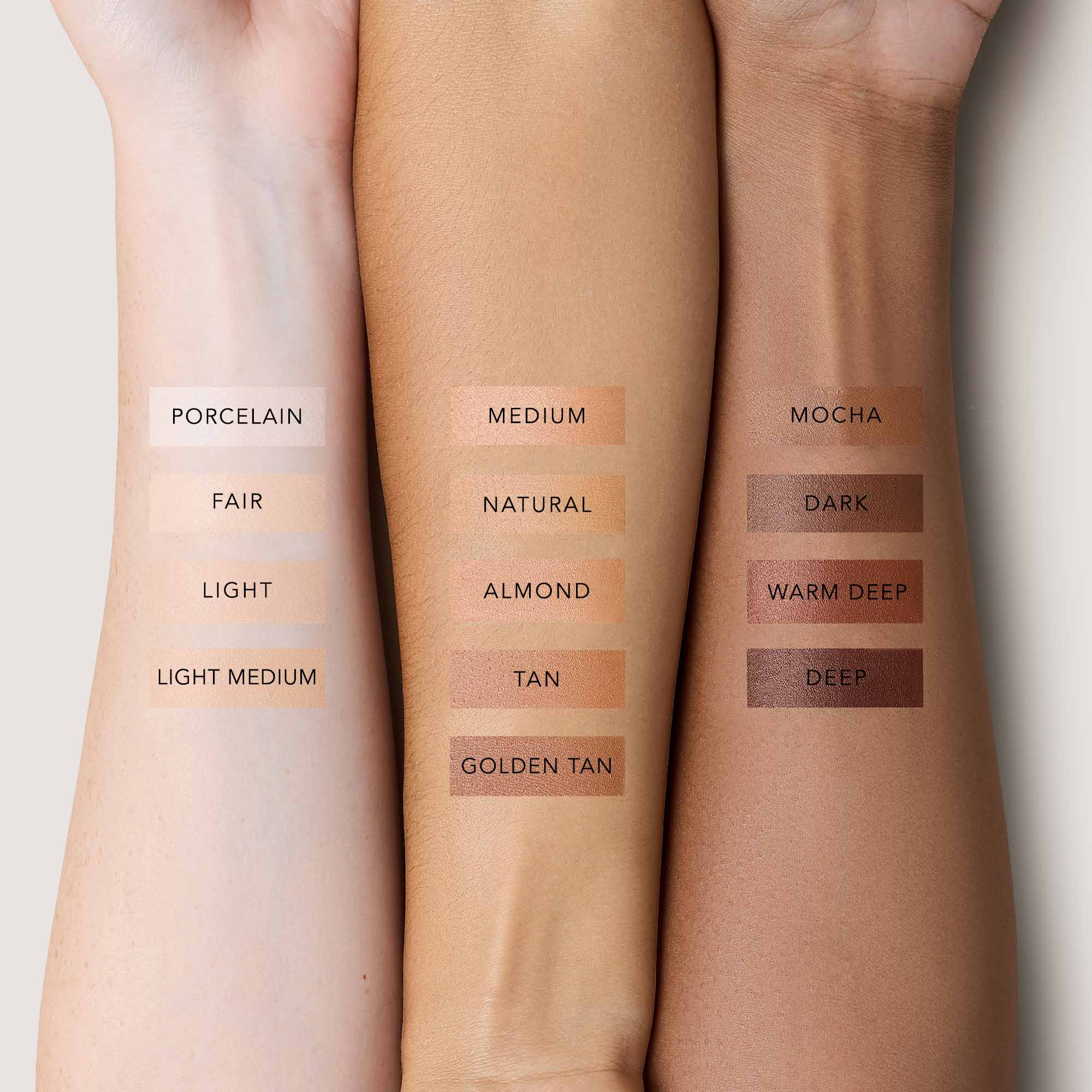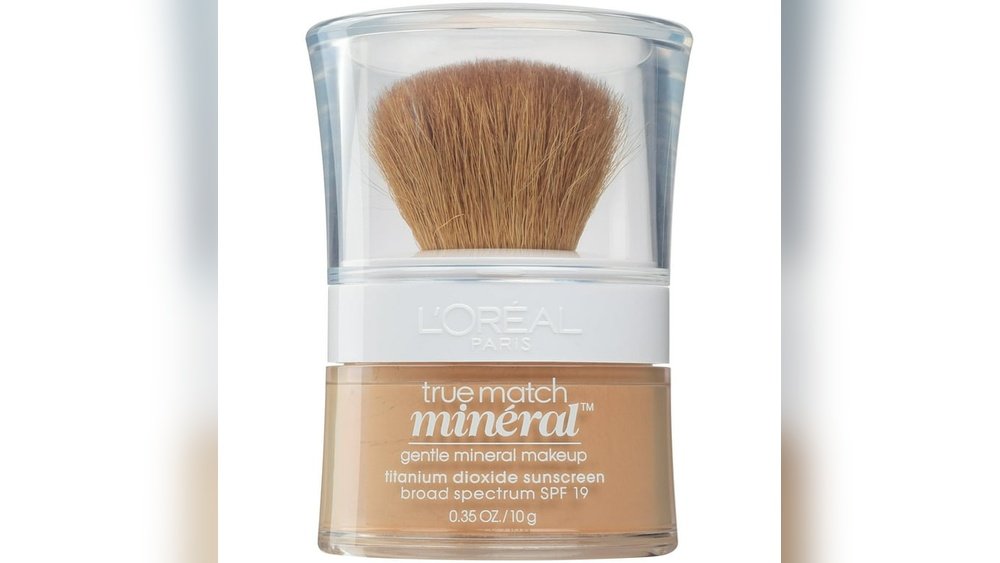You’ve just got a fresh tan, and now your usual makeup looks off. Your foundation seems too light, your blush doesn’t pop, and your whole face feels mismatched.
Sound familiar? Don’t worry—you don’t have to throw away your favorite products or buy a whole new makeup kit. Recoloring your makeup to match your tan is easier than you think, and it can make all the difference in achieving that flawless, sun-kissed glow.
In this guide, you’ll learn simple, practical tips to adjust your foundation, blush, and more so your makeup looks natural and perfectly blended with your new skin tone. Ready to make your makeup work with your tan, not against it? Let’s dive in!

Credit: nomakeupmakeup.com
Identify Your Undertone
Identifying your undertone is key to recoloring makeup that matches your tan perfectly. Your undertone is the natural color beneath your skin’s surface. It stays the same no matter how much you tan or how your skin changes. Knowing your undertone helps you choose the right foundation, blush, and bronzer shades. This creates a natural and seamless look that enhances your tan.
Warm, Cool, Or Neutral Tones
Skin undertones fall into three main categories: warm, cool, and neutral. Warm undertones have yellow, golden, or peach hues. Cool undertones show pink, red, or blue shades. Neutral undertones are a mix of both warm and cool tones. They can be hard to spot but usually look balanced. Understanding your undertone guides you to the best makeup colors for your tan.
Matching Tan Undertones
Matching your makeup to your tan means matching the undertones. Warm undertones pair well with golden, bronze, or caramel shades. Cool undertones match better with rosy, plum, or ash tones. Neutral undertones can wear both warm and cool colors, but soft, muted shades work best. Matching undertones keeps your makeup looking natural and fresh on tanned skin.

Credit: www.walmart.com
Choose The Right Foundation
Finding the right foundation is key to matching your makeup with your tan. Your skin tone changes with a tan, so your foundation must adapt. A perfect match makes your face look natural and fresh. Avoid shades that are too light or too dark. Blend the foundation well into your neck and jawline for a seamless look.
Focus on undertones as much as depth. Undertones create harmony between your skin and makeup. They help avoid a mask-like effect or a patchy finish. Choose foundation formulas that suit your skin type for comfort and wearability.
Foundation Shades For Tanned Skin
Tanned skin often has warmer or deeper shades than your usual tone. Look for foundations labeled as warm beige, caramel, honey, or bronze. These shades blend well with sun-kissed skin. Test foundation on your jawline to see if it matches your tan perfectly. Avoid foundations that are too orange or red, as they can look unnatural.
Consider medium to full coverage formulas if your tan is uneven. They help even out your skin tone without looking heavy. Lightweight foundations work well if you want a natural glow that lets your tan shine through.
Using Olive Undertones
Some tans have a greenish or olive hue, especially from certain self-tanners. Foundations with olive undertones balance this tone and create a natural look. Olive undertones work well for neutral or yellowish tanned skin. They prevent your face from looking too pink or yellow next to your tan.
Look for foundation shades marked with olive or neutral undertones. Test them under natural light to check the color match. Mixing a small amount of olive undertone foundation with your usual shade can help customize your color. This step ensures your makeup blends smoothly with your tan.
Mixing And Adjusting Foundation
Adjusting foundation to match a tan helps create a seamless look. Mixing your foundation lets you customize the shade perfectly. This step saves money and avoids buying new products. It also prevents a mask-like effect on the skin. Use simple methods to deepen or warm your foundation tone. Keep your skin’s undertone in mind for the best results.
Adding Bronzer To Foundation
Mix a small amount of bronzer with your foundation on the back of your hand. Blend well before applying to your face. Bronzer adds warmth and depth to your base color. Start with a little and build up slowly for a natural finish. This method works well for powder or cream bronzers. It helps your foundation match a sun-kissed glow without streaks.
Using Bronzing Serums
Bronzing serums are liquid and blend easily with foundation. Add a few drops to your foundation to create a smooth, glowing tint. These serums often contain light-reflecting particles for a radiant effect. Mix thoroughly for an even color before applying. Bronzing serums offer a lightweight option for subtle warmth. Perfect for those who want a natural, dewy look.
Correcting Uneven Tan
Uneven tan can create patchy and dull skin tone. Correcting these irregularities helps makeup blend smoothly. It ensures your face matches your body’s tan perfectly. Using the right products hides discoloration and dark spots. This makes your overall look natural and fresh. Simple tools like color correctors and concealers work best. They target problem areas and balance your skin tone.
Color Correctors For Discoloration
Color correctors fix uneven tones before applying foundation. Different shades cancel out specific discolorations. Green correctors reduce redness from sunburn or irritation. Peach or orange correctors brighten dull, dark patches. Apply correctors lightly to affected areas only. Blend gently to avoid harsh lines. After correcting, use foundation that matches your tan. This creates a smooth, even canvas for your makeup.
Concealers For Dark Spots
Dark spots stand out on tanned skin. Use concealers to hide these spots effectively. Choose a concealer one or two shades lighter than your tan. Dab concealer directly on dark spots with a small brush or finger. Pat gently to blend edges into surrounding skin. Avoid rubbing to keep coverage intact. Set concealer with translucent powder for long-lasting wear. This technique brightens your complexion without looking heavy.
Enhance With Complementary Makeup
Enhancing your look with complementary makeup helps your tan appear natural and radiant. Using the right blushes, bronzers, and sprays creates balance and glow. These products add warmth and dimension to your face. They bring life to your complexion and match your tan perfectly.
Choosing Powder And Cream Blushes
Choose blush shades that match your skin tone and tan depth. For light tans, soft pinks or peaches work well. Medium tans look great with coral or warm rose shades. Deep tans shine with berry or brick red blushes. Cream blushes blend seamlessly into the skin and add a natural glow. Powder blushes offer buildable color and a matte finish. Apply blush to the apples of your cheeks and blend upward for a lifted look. This enhances your tan without overpowering it.
Using Bronzing Drops And Sprays
Bronzing drops and sprays help deepen your tan and add warmth. Mix a few drops of bronzing serum into your foundation for a subtle tan boost. Sprays provide an even glow and can be applied on the face or body. Choose products with a warm undertone to complement your tan. Use bronzer lightly on cheekbones, temples, and jawline for natural shading. These products refresh your makeup and maintain a sun-kissed look all day.
Tips For Matching Face To Body Tan
Matching your face tan to your body tan creates a seamless and natural look. Uneven tones can make makeup stand out in the wrong way. Simple techniques help blend shades smoothly. Follow these tips to keep your face and body colors balanced and glowing.
Balancing Face And Neck Shades
Start by applying foundation to your face and neck. Use a shade slightly darker than your usual foundation. Blend well into the neck to avoid a harsh line. Mix foundation with a bit of bronzer for a warmer tone. Check the color in natural light for accuracy. This helps the face and neck appear uniform.
Maintaining A Natural Glow
Use a light, warm-toned highlighter on cheekbones and nose. Avoid heavy powders that dull the tan. Choose cream or liquid formulas for a dewy finish. Apply bronzer lightly on the cheeks and jawline. This adds warmth without looking fake. Keep the glow subtle to enhance the tan naturally.

Credit: nomakeupmakeup.com
Frequently Asked Questions
How To Get Makeup To Match Tan?
Choose foundation with the same undertone as your tan—warm, cool, or olive. Mix bronzer into foundation to deepen shade. Blend well for a seamless match.
How To Make Foundation Darker When You Have A Tan?
Mix a small amount of bronzer or bronzing serum into your foundation for a deeper shade. Blend well for a natural finish.
How To Fix Uneven Tanned Skin With Makeup?
Use a color corrector on uneven areas, then apply concealer to blend spots. Choose foundation matching your tan’s undertone for a seamless look. Blend bronzer with foundation to deepen color if needed. Finish with setting spray to ensure even, natural coverage all day.
How To Match Face To Spray Tan?
Identify your skin’s undertone—cool, warm, or neutral. Choose a spray tan shade that complements this undertone for a natural look. Match foundation by mixing bronzer or using formulas with similar undertones. Blend evenly to avoid harsh lines between your face and tan.
How Can I Adjust Foundation To Match A New Tan?
Mix a small amount of bronzer with your foundation to deepen the shade evenly.
What Undertones Should I Choose For Tanned Skin?
Choose warm or olive undertones to blend naturally with most tans.
Conclusion
Recoloring makeup to match your tan helps your skin look natural and glowing. Choose shades that blend well with your undertone for the best result. Mixing bronzer or darker foundation tones can adjust colors easily at home. Remember, gentle blending makes makeup seamless and fresh.
Practice these tips to feel confident in your sun-kissed look every day. Your makeup should enhance, never mask, your natural beauty. Keep it simple, and enjoy the warm, radiant effect of a perfect match.
 Skip to content
Skip to content 